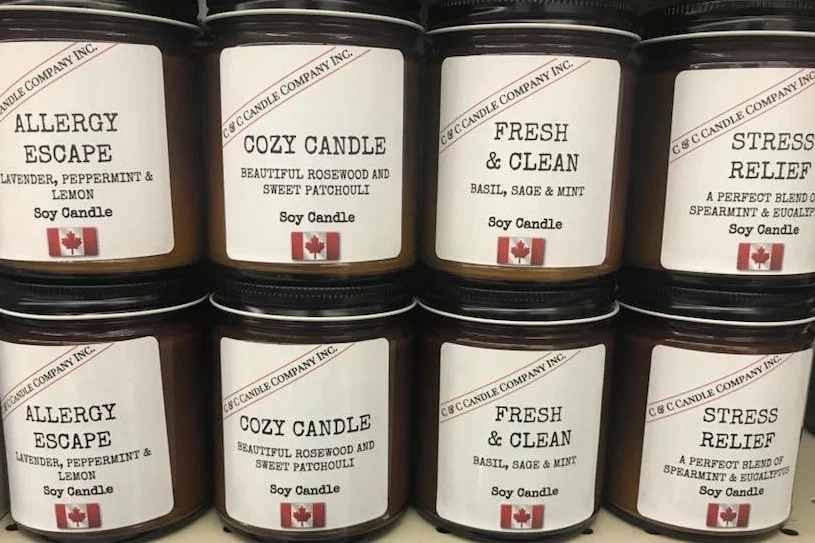4 Fulfillment Challenges Canadian Retailers & Brands Face During COVID-19
/By Kayla Matthews
The COVID-19 pandemic has substantially disrupted numerous aspects of everyday life, forcing people to socialize over video chats instead of in person or work from home instead of coming into their offices. This global health crisis has also impacted the Canadian retail sector, and particularly, companies' abilities to meet customers' needs.
Here are four retail fulfillment challenges likely to exist for the foreseeable future:
1. Consumers More Likely to Buy Food in Bulk
A recent Deloitte study investigated how Canadians shop differently because of COVID-19 and what that means for retailers. One of the trends related to how people are more likely to stock up on groceries. The statistics showed 1 in 4 Canadians had more food on hand than usual. Also, 13% of Canadians aged 55 and older bought enough food to last more than 30 days.
Another relevant finding showed 45% of Canadians purchased enough food to last them one to two weeks. That suggests people are no longer shopping by visiting stores several times in one week. They're now planning how to get what they need for longer timespans.
This new pattern of buying more during each visit means Canadian retail brands may struggle to keep shelves full. Introducing item limits on the most in-demand merchandise could stop shoppers who otherwise buy out of panic more than necessity, though.
2. Retailers' Websites Having Difficulty With the Increased Traffic
The coronavirus moved substantial amounts of retail activity online and away from physical stores. Some brands' websites crashed under the increased demand.
Canadian Tire closed its physical stores in Ontario this April to satisfy government-imposed rules to restrict the virus' spread. Customers could still shop by requesting home deliveries or arranging curbside pickups online. Many couldn't do that because they saw website messages about system difficulties. Some also reported errors when using the brand's app, and other buyers complained via Twitter.
When a retailer's online infrastructure cannot tolerate traffic spikes, the affected brands are highly likely to experience retail fulfillment challenges. Some enterprises cope with them by introducing virtual queue systems. These tell a shopper how many people are in front of them. As one individual finishes buying things, another consumer gets the chance.
Those setups bring downsides, too, however. Loyal customers may become fed up by the prospect of long wait times. They may decide to go elsewhere to buy what they need and want.
3. Competing With Amazon
Many people immediately associate shopping online with Amazon, and that's nothing new. One of the defining e-commerce trends of 2018 was the so-called "Amazon effect." The brand accounted for more than 60.5% of online sales growth then, and it remains dominant. Perks like two-day shipping within Canada make consumers eager to shop at the site while challenging all other e-commerce retailers to prove they're worthy of shoppers' business, too.
Analysts say that even Amazon is having a hard time during the coronavirus outbreak. Individuals buying non-essential items may have to wait for them as long as a month. Setting up a website to seize opportunities is not easy, though. Some smaller retailers didn't have websites before the mandatory shutdowns, leaving them racing to catch up.
Plus, Amazon uses high-tech algorithms to make product suggestions, leading to more personalized experiences. Most retailers entering the e-commerce space can't implement features like that. What they can do, though, is set expectations for customers. Showing shoppers the real-time in-stock quantities of products and giving them accurate order fulfillment timeframes can keep them happy.
4. Shipping Delays
Canadian retail brands must compensate for possible fulfillment slowdowns occurring once goods leave a company's facilities. For example, many trucking businesses are laying off workers and discovering that the March demand upticks for their enterprises did not persist beyond that month.
Trucking business professionals expect various difficulties in the future. Some foresee cutting operating budgets, while others anticipate trouble sourcing vehicle components to keep fleets in working order. The industry downturn may mean retailers have to switch transportation suppliers or wait longer for merchandise pickups at warehouses.
Canada Post also reported delivery levels equal to those seen during the holiday season. On April 20 alone, the company delivered 1.8 million parcels to customers. Retailers can avoid disappointing consumers by giving specifics. They could say something like, "We pack most orders within two working days, but shipments may take up to a week to arrive after leaving our premises."
Awareness of Retail Fulfillment Delays Can Spur Effective Action
Once Canadian retail brands understand the most probable issues they'll face concerning fulfillment, the knowledge will enable them to reduce major issues. Assessing the current and emerging situations will help retailers make feasible plans to weather the pandemic.
Kayla Matthews is a researcher, writer and blogger covering topics related to technology, smart gadgets, the future of work and personal productivity. She is the owner and editor of ProductivityTheory.com and ProductivityBytes.com. Previously, Kayla was a senior writer at MakeUseOf and contributing freelancer to Digital Trends. Kayla's work on smart homes and consumer tech has also been featured on Houzz, Dwell, Inman and Curbed. Additionally, her work has appeared on Quartz, PRNewswire, The Week, The Next Web, Lifehacker, Mashable, The Daily Dot, WIRED and others.










![Inside Inscape's Hip Financial District Retail Showroom [Photos]](https://images.squarespace-cdn.com/content/v1/529fc0c0e4b088b079c3fb6d/1566495657016-5PTHWMYMALSU9VBIKGNG/Screen%2BShot%2B2019-08-22%2Bat%2B1.28.30%2BPM.jpg)
![Retail-insider-NRIG-banner-300-x-300-V01-3[2].jpg](https://images.squarespace-cdn.com/content/v1/529fc0c0e4b088b079c3fb6d/1593476525034-QRWBY8JUPUYFUKJD2X9Z/Retail-insider-NRIG-banner-300-x-300-V01-3%5B2%5D.jpg)
![Retail-insider-NRIG-banner-300-x-300-V01-2[2].jpg](https://images.squarespace-cdn.com/content/v1/529fc0c0e4b088b079c3fb6d/1593476491497-W6OZKVGCJATXESC9EZ0O/Retail-insider-NRIG-banner-300-x-300-V01-2%5B2%5D.jpg)
![Retail-insider-NRIG-banner-300-x-300-V01-4[2].jpg](https://images.squarespace-cdn.com/content/v1/529fc0c0e4b088b079c3fb6d/1593476508900-TJG5SNQ294YNOCK6X8OW/Retail-insider-NRIG-banner-300-x-300-V01-4%5B2%5D.jpg)
With many physical stores forced to close or adopt new ways of operating, retailers must remain adaptable.